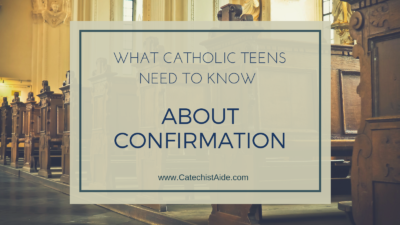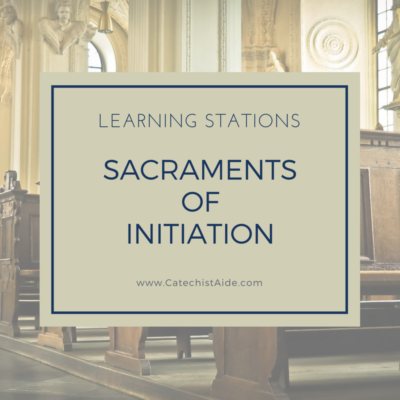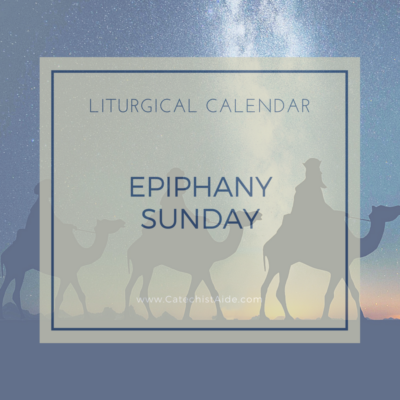A good way to begin any Confirmation preparation is with a basic understanding of what the sacrament is all about. Only then can our young Catholics understand why Confirmation is so essential. The first step in the process is easy enough – ask the students, “What does it mean to be confirmed?” Don’t be alarmed if the only response you get is a shrug of the shoulders or a blank stare. You may have a few students who will respond with “becoming an adult in the Church” or “confirming what our parents chose for us at our Baptism.” Whatever the response, it’s our job as Catechists to help set the record straight about exactly what Confirmation is, and perhaps more importantly, what it is not.
Let’s start by dispelling one of the more common myths about Confirmation:
It’s not a choice
This is a little misleading. Clearly, one can choose to receive Confirmation, or not. However, the sacrament is not an opportunity where the Confirmandi “choose” for themselves to be Catholic, or “confirm” the choice made for them by their parents and godparents at Baptism. Regardless of whether we had any voice in the matter, Baptism marks us with an indelible (permanent) mark as Catholic Christians. We become full members of Christ’s body, the Church through Baptism.
From the Catechism of the Catholic Church (CCC):
The Catechism also reminds us that “baptismal grace is a grace of free, unmerited election and does not need ‘ratification’ to become effective.” (CCC 1308)
So, understanding that we are already fully Catholic through Baptism makes the question, “what does it mean to be confirmed,” all the more critical. To answer this, we must look at what Confirmation is, and what it does for us.
Confirmation imparts grace
Like all the sacraments, Confirmation is a gift given by God. And, like all of God’s gifts, it is designed to help us grow in holiness, and bring us into closer relation with Him through the imparting of grace.
It completes the Christian Initiation begun at Baptism
Wait a minute! We just said that Baptism makes us full members of the Church. What is left to complete?
Consider that, for the most part, Catholics are baptized as infants. “The faith required for Baptism is not a perfect and mature faith, but a beginning that is called to develop.” (CCC 1253) Our faith at baptism requires nourishment to grow and mature. We receive this nourishment through the Eucharist and catechesis. All members of the Church share in the responsibility of faith formation and religious education: parents, godparents, the clergy and the parish community. This maturing of the faith prepares us for Confirmation, where we are strengthened by the Holy Spirit to go out into the world as faithful witnesses and disciples of Christ. As members of Christ’s Body (the Church), we share an “apostolic calling” to spread God’s kingdom throughout the world. Jesus told his disciples, “Just so, your light must shine before others, that they may see your good deeds and glorify your heavenly Father.” (Matthew 5:16) We are also called to be a light unto the world, and the sacrament of Confirmation equips us for that mission.
It is the full outpouring of the Holy Spirit
In John’s Gospel, we read that Christ prepared his followers for his eventual departure from this earth. He told them that it would be better for them if he left because then he would send the Advocate to be with them. At the time, the apostles were full of grief at the thought of Jesus going and probably didn’t understand who this mysterious Advocate was. But, just as Jesus promised, at Pentecost, the apostles received the outpouring of the Holy Spirit. They were able to recognize that this was the person Jesus sent to lead them to the truth, to guide them, and to strengthen them. And, because they were receptive, the Holy Spirit was able to work within them to transform them from frightened men, in hiding from the authorities to proclaimers of the resurrection! The Holy Spirit which the apostles received is the same Holy Spirit whose gifts are sealed within us at Confirmation. He seeks to work within us in the same way. If we are receptive and open to his gifts, we too can be transformed, confident that we can accomplish every good thing.
When we reduce Confirmation to a giant to-do list that we race to complete, we risk losing the importance of what is happening along the way. Confirmation is so much more than just another box to check on the way to adulthood. Talk to your students and children about what this sacrament really means. Don’t let them miss out on experiencing one of God’s greatest gifts.
© 2018 Catechist’s Aide



